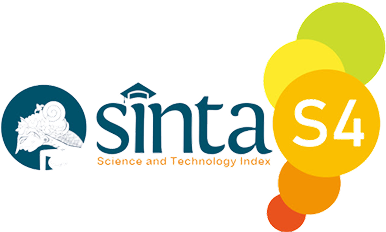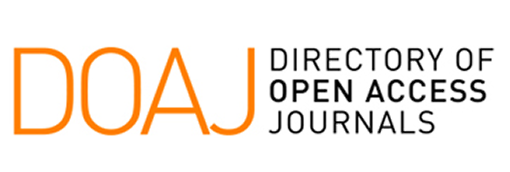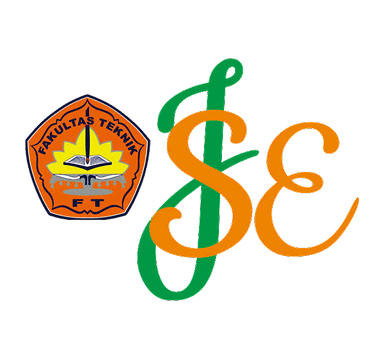Penentuan Alternatif Instalasi Pengolahan Air Limbah Di Desa Sayati, Kabupaten Bandung
Keywords:
Instalasi Pengolahan Air Limbah, Pencemaran Air, Desa Sayati, Pembuangan LimbahAbstract
The construction of a wastewater treatment plant (WWTP) in Sayati Village is still required in order to dispose of the village's wastewater in an appropriate manner. One potential location for wastewater disposal is the Cikahayangan River. However, the discharge of sewage into the Cikahayangan River results in water pollution, which in turn disrupts the river's natural functions. It is imperative that Sayati Village devise a WWTP that can effectively and efficiently treat wastewater, while also adapting to the existing conditions of the village over the next few years. This is crucial to prevent any adverse impacts from water pollution. The BOD/COD ratio for Sayati Village is 0.809, indicating that the wastewater is treated biologically. The unit selected from the scoring method is activated sludge. However, the land available in Sayati Village is limited, so the WWTP unit refers to the 2022 Sanimas Technical Instructions, which describe a compact WWTP for 100 families with a land availability of 3 meters in width. The domestic wastewater treatment plant (WWTP) processing unit planned for Sayati Village, Margahayu District, consists of primary, secondary, and tertiary domestic processing units. The secondary processing unit selected is an anaerobic filter, which is in accordance with the 2022 Sanimas Technical Guidelines. The units that will be planned in Sayati Village are a bar screen, a grease trap, a screw pump, a grit chamber, an equalization tank, an anaerobic filter, a disinfection unit, and a sludge processing unit.
References
[1] M. A. R. Alfaroby and E. Wardhani, “Perencanaan Sistem Pengolahan Air Limbah Domestik Pada Daerah Aliran Sungai Cibabat, Kota Cimahi,” Jurnal Serambi Engineering, vol. 6, no. 2, Mar. 2021, doi: 10.32672/jse.v6i2.2884.
[2] A. A. Kusumawardhani, E. Wardhani, and N. Halomoan, “Penentuan Sistem Pengelolaan Air Limbah Domestik di Kecamatan Bekasi Timur, Kota Bekasi,” Jurnal Teknik Lingkungan EnviroSan, vol. 2, no. 1, pp. 9–13, Jun. 2019.
[3] E. Wardhani and D. Salsabila, “Pemilihan Sistem Pengolahan Air Limbah Domestik Terbaik Sebagai Upaya Peningkatan Kualitas Air Di Das Cikapundung Kabupaten Bandung Barat,” Jurnal Serambi Engineering, vol. 7, no. 2, pp. 3062–3071, Apr. 2022.
[4] A. Rahman, E. Wardhani, and N. Halomoan, “Perencanaan Sistem Plambing Air Bersih dan Air Buangan di Rusunami X dengan Aspek Konservasi Air,” Jurnal Serambi Engineering, vol. 6, no. 3, Jun. 2021, doi: 10.32672/jse.v6i3.3115.
[5] E. Wardhani et al., “Penentuan Timbulan Air Limbah Dan Unit Instalasi Pengolahan Air Limbah Di Central Business District Kota Harapan Indah Kota Bekasi,” Jurnal Teknologi Lingkungan UNMUL, vol. 7, no. 1, p. 1, Jun. 2023, doi: 10.30872/jtlunmul.v7i1.9774.
[6] Y. Hassani, “Jorok! Sungai Cikahiyangan Bandung Dipenuhi Sampah,” detikNews. Accessed: Jul. 18, 2024. [Online]. Available: https://news.detik.com/foto-news/d-5994005/jorok-sungai-cikahiyangan-bandung-dipenuhi-sampah
[7] Badan Pusat Statistik, Kecamatan Margahayu Dalam Angka Tahun 2023. Kabupaten Bandung, 2023.
[8] Indonesia Geospasial, “Indonesia Geospasial GIS dan Penginderaan Jauh.”
[9] Pemerintah Kabupaten Bandung, Peraturan Daerah Kabupaten Bandung Nomor 27 Tahun 2016 tentang Rencana Tata Ruang Wilayah Kabupaten Bandung Tahun 2016-2036. Indonesia, 2016.
[10] R. Utama, “Analisis Kebutuhan Air Minum Kabupaten Tulang Bawang Tahun 2025,” Seminar Nasional Insinyur Profeional (SNIP), 2022.
[11] S. Iskandar, I. Fransisca, E. Arianto, and A. Ruslan, “Sistem Pengelolaan Air Limbah Domestik - Terpusat Skala Permukiman,” Kementerian Pekerjaan Umum Dan Perumahan Rakyat Direktorat Jenderal Cipta Karya Direktorat Pengembangan Penyehatan Lingkungan Permukiman.
[12] Kementerian Pekerjaan Umum dan Perumahan Rakyat, Peraturan Menteri Pekerjaan Umum dan Perumahan Rakyat Nomor 04/PRT/M/2017 Tahun 2017 tentang Penyelenggaraan Sistem Pengelolaan Air Limbah Domestik. Indonesia: BN. 2017/NO.456, Jdih.pu.go.id: 35 hlm., 2017.
[13] C. G. Bakkara and A. Purnomo, “Kajian Instalasi Pengolahan Air Limbah Domestik Terpusat di Indonesia,” Jurnal Teknik ITS, vol. 11, no. 3, Dec. 2022, doi: 10.12962/j23373539.v11i3.90486.
[14] G. A. Rahmawati, E. Wardhani, and L. Apriyanti, “Perencanaan Instalasi Pengolahan Air Limbah Mal X Kota Bandung,” Jurnal Serambi Engineering, vol. 4, no. 2, Aug. 2019, doi: 10.32672/jse.v4i2.1330.
[15] L. Metcalf, H. P. Eddy, and G. Tchobanoglous, Wastewater engineering: treatment, disposal, and reuse. New York: McGraw-Hill, 2004.
Downloads
Published
Issue
Section
License
Copyright (c) 2024 Eka Wardhani, Adila Shalahuddin Anur, Salsabila Nurul Shofa Annisa, Zeihan Niswanurrahim, Yalka Sabila, Harashta Haifa Zahra (Author)

This work is licensed under a Creative Commons Attribution 4.0 International License.












